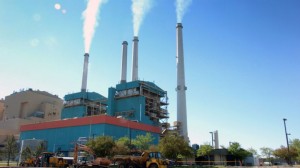 The (aptly named) Union of Concerned Scientists released a report this week showing that the U.S. Environmental Protection Agency’s new power plant rule sets a national renewable energy target that is barely above federal business-as-usual projections.
The (aptly named) Union of Concerned Scientists released a report this week showing that the U.S. Environmental Protection Agency’s new power plant rule sets a national renewable energy target that is barely above federal business-as-usual projections.
This rule was supposed to be one of the Obama Administration’s signature climate change achievements, issued under the Clean Air Act pursuant to a 2007 Supreme Court decision requiring it. So what gives? As one of the study researchers commented:
“The EPA was obviously feeling pressure from Congress and states over the rule and wanted to come up with something they thought would be defensible,” Steve Clemmer, director of energy research at UCS, told ThinkProgress. “I think they ended up erring too far on the side of being conservative about renewables. When the EIA — not an agency that’s seen as being optimistic about renewables — says we’re going to pretty much get to that level without the Clean Power Plan, that’s pretty pessimistic and unrealistic really.”
Given that the rule is still in draft stage, there is time to improve it. The study authors recommend that EPA bump up the renewable goal considerably, noting that states can cost-effectively produce nearly twice as much renewable electricity as the agency calculated. And it’s worth keeping in mind that the renewable energy target is only one part of the rule, which also includes energy efficiency and other greenhouse gas-reducing measures.
Given the environmental weakness of this part of EPA’s draft regulation, it’s ironic that congressional Republicans are complaining that EPA worked too closely with environmentalists in crafting it. For my part, I certainly hope EPA will be more receptive to input on this issue from the environmental community going forward.


